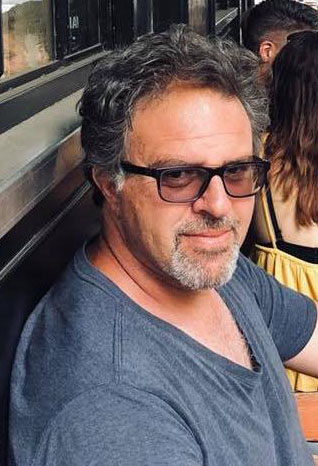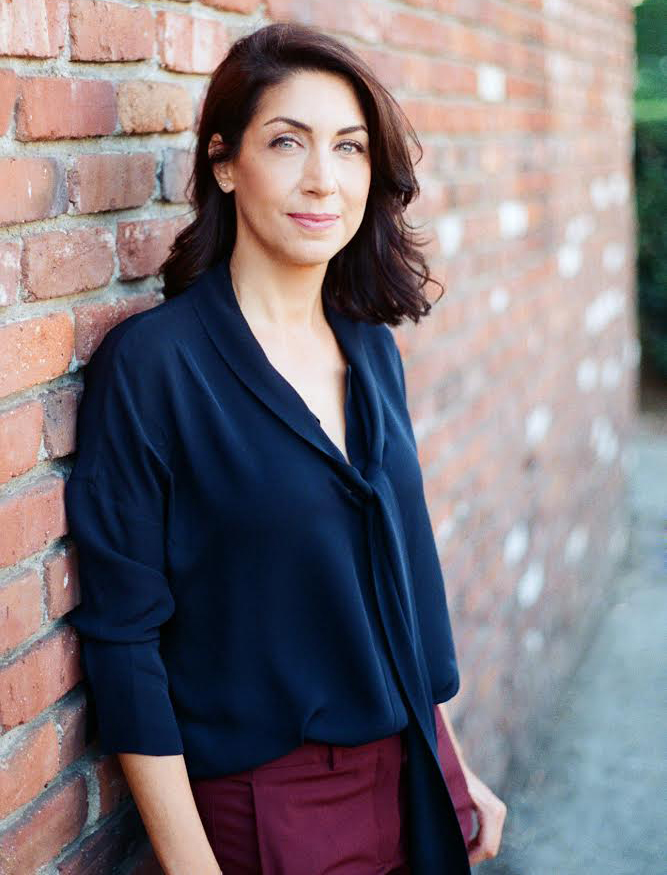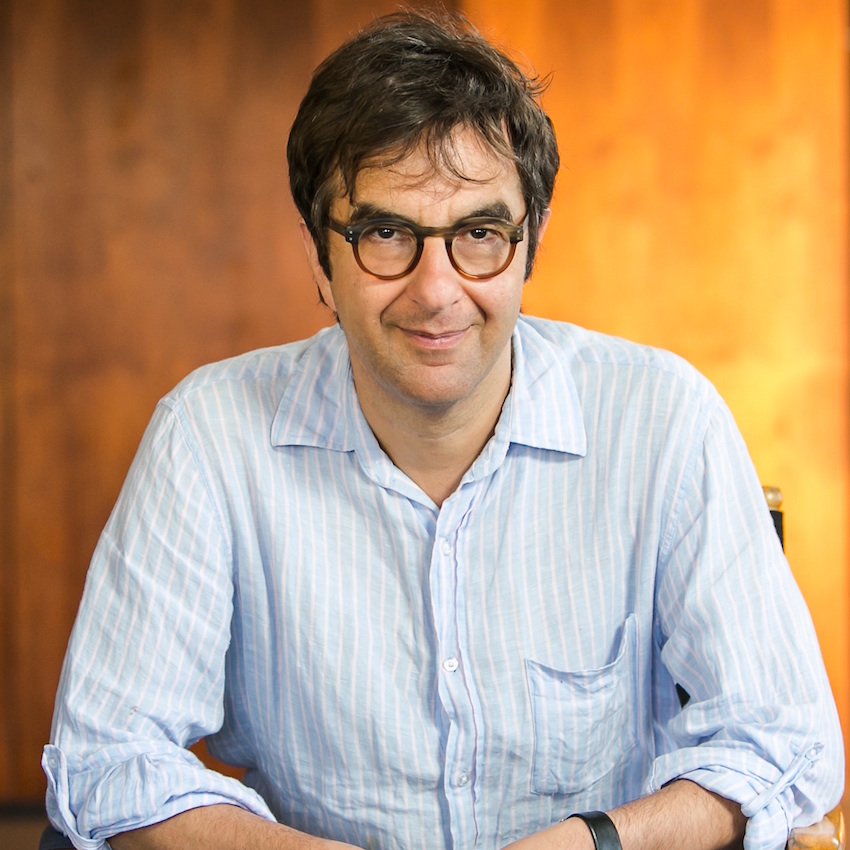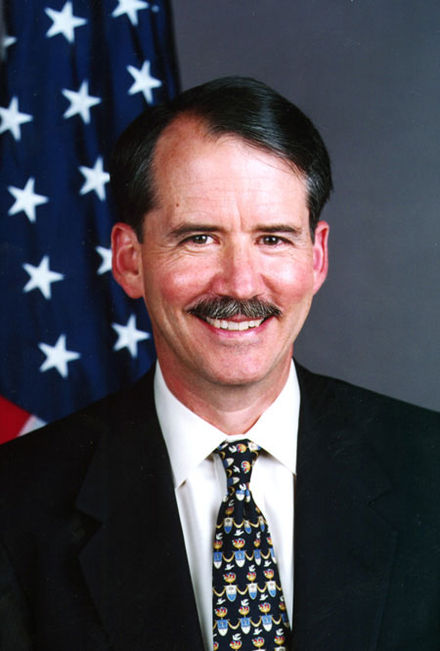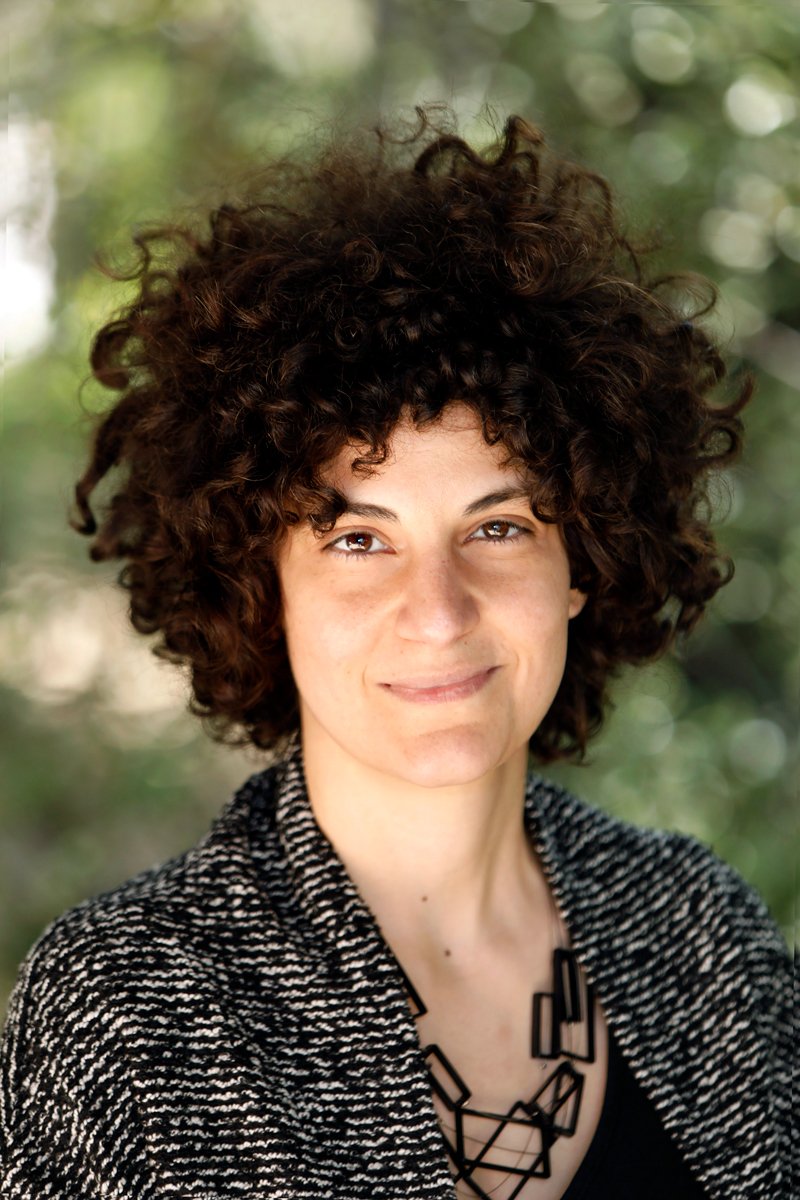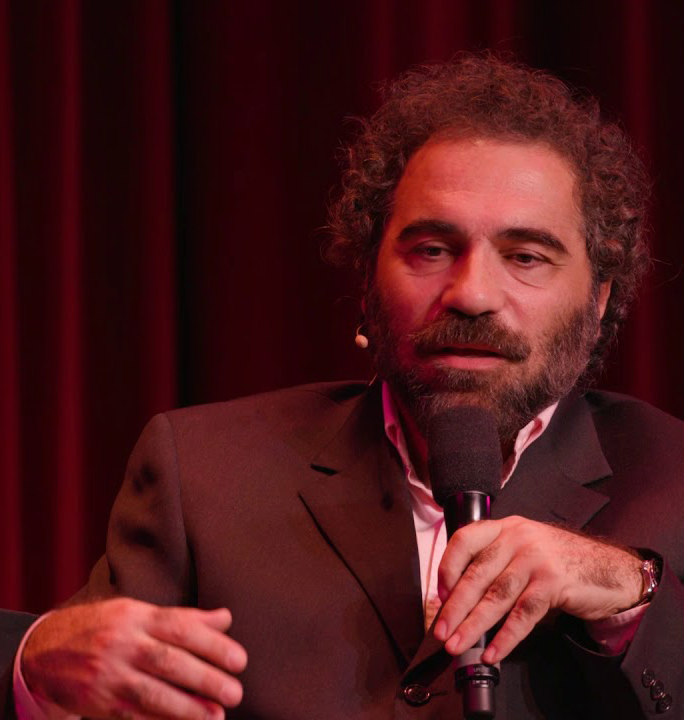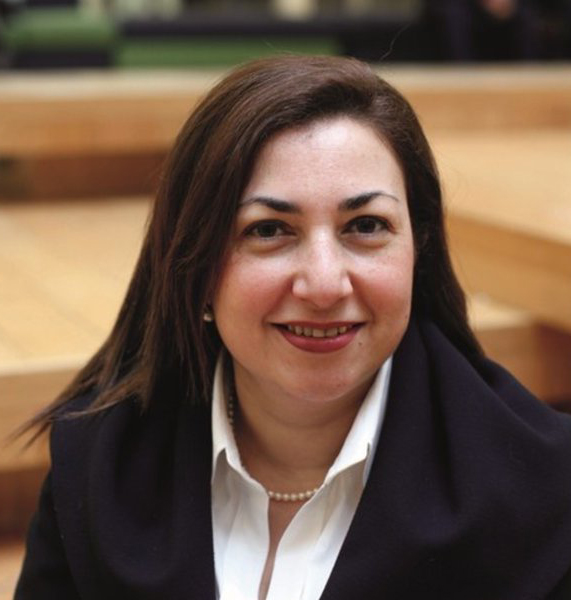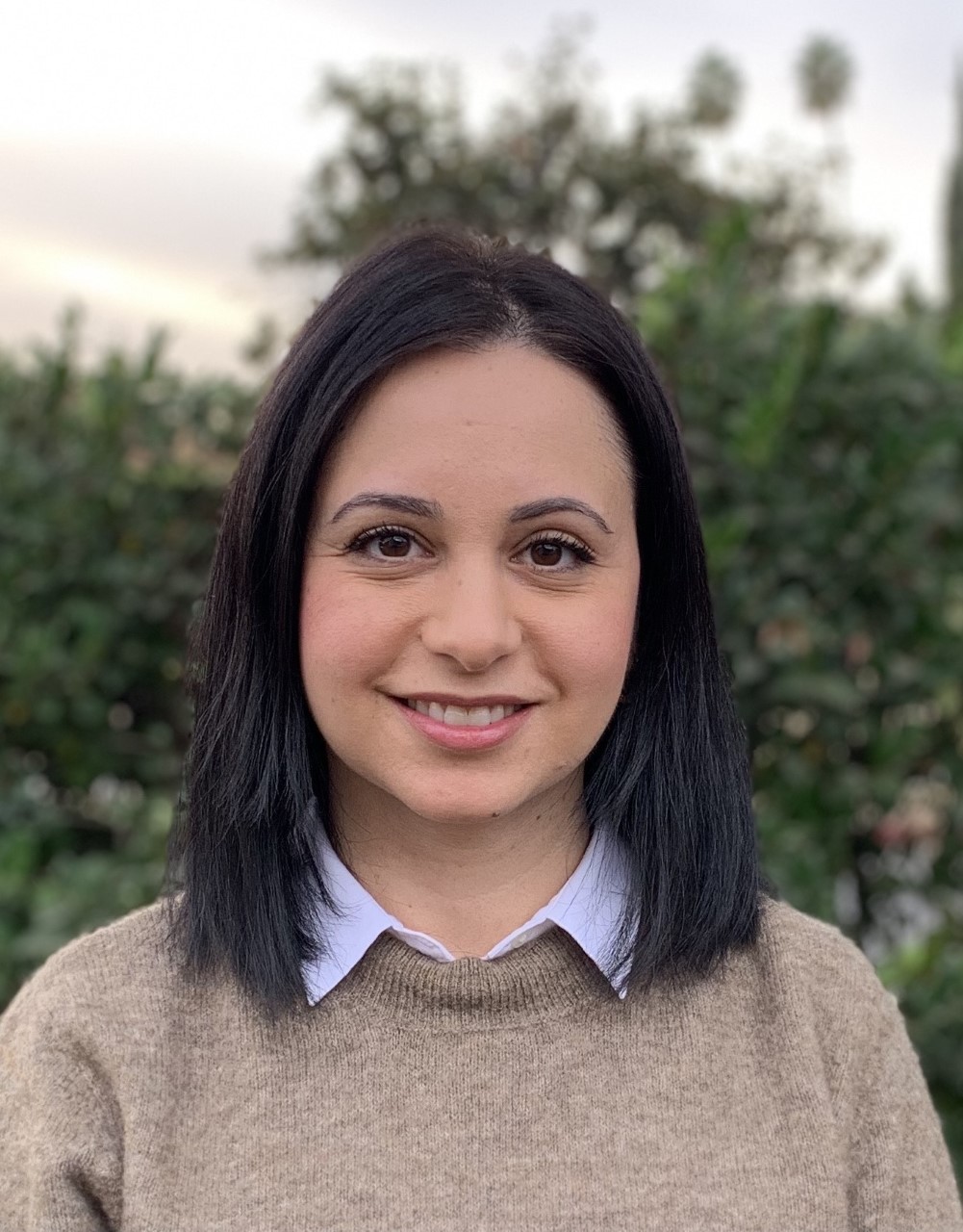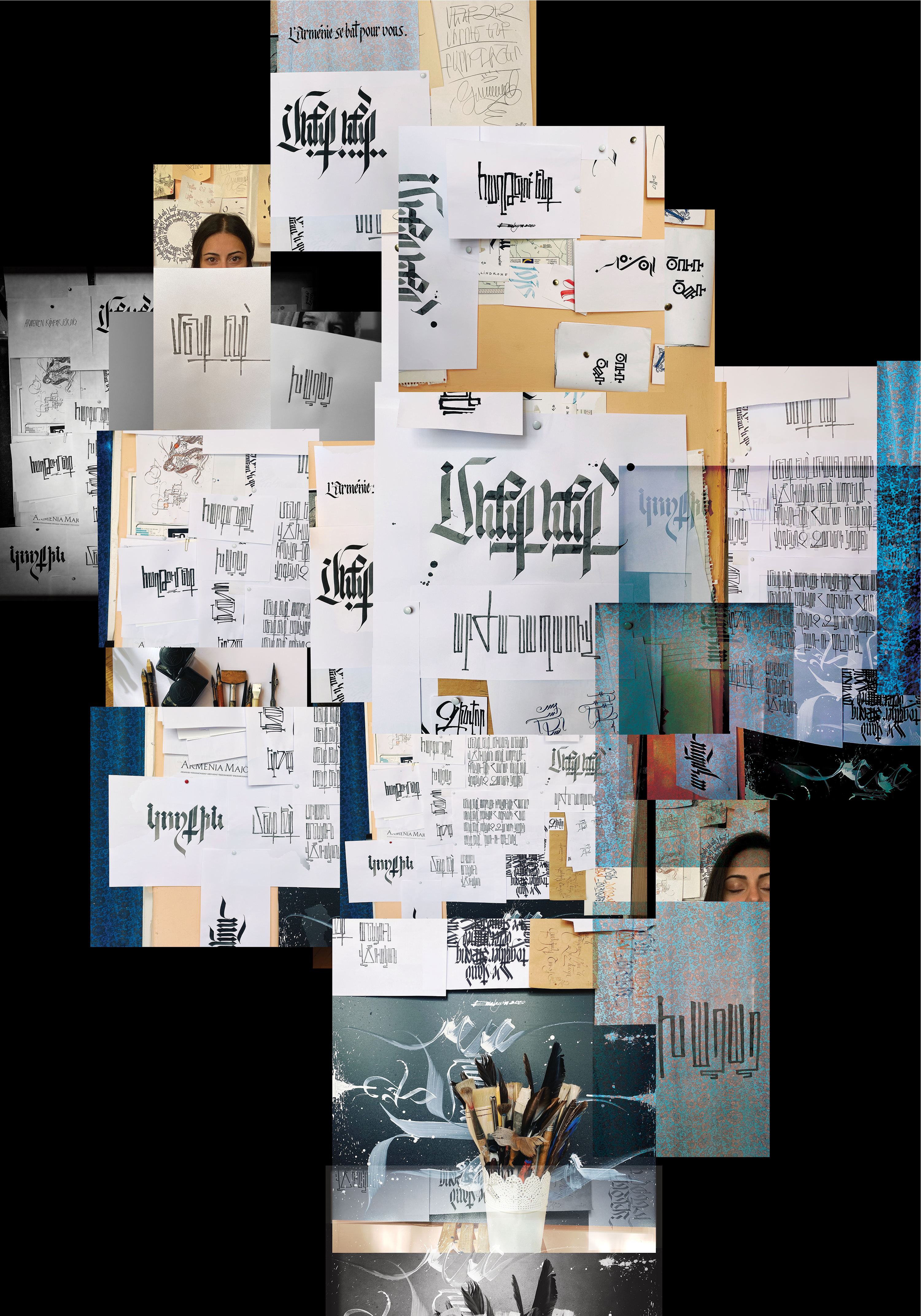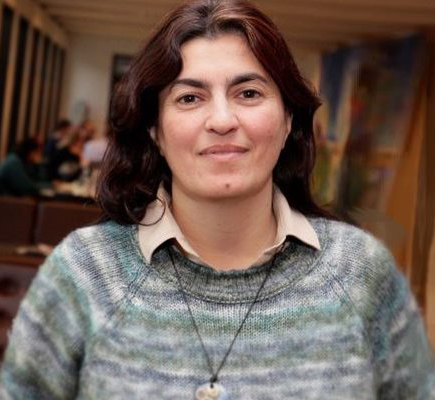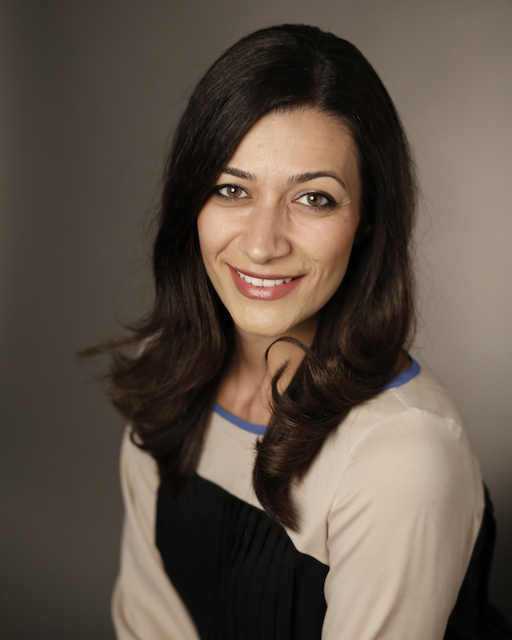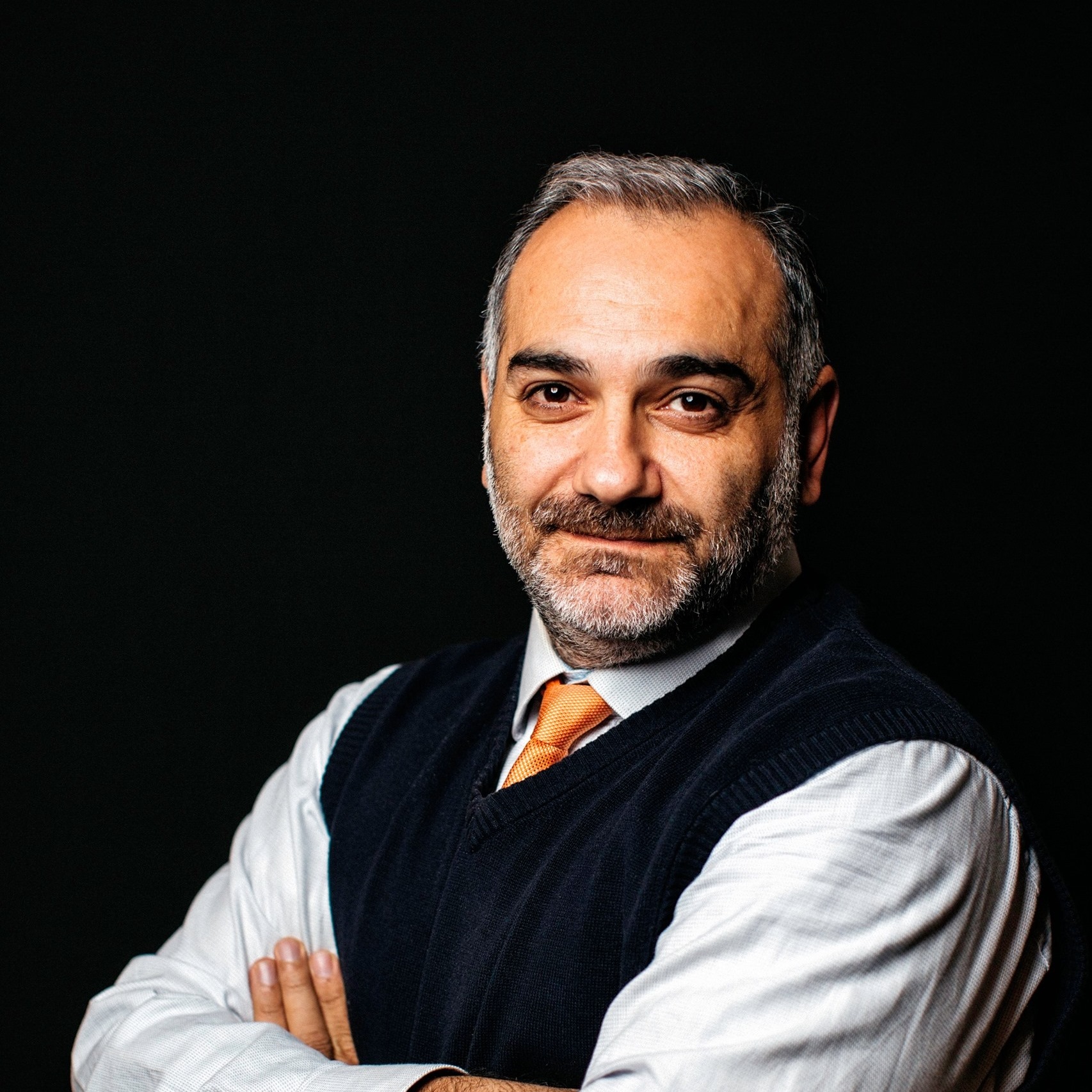By invitation of the USC Institute of Armenian Studies, a select group of scholars, intellectuals, and artists will contribute short reflections and observations on the war in and for Karabakh / Artsakh, while trying to make sense of this time, this region, this body of knowledge, and about life, values, scholarship, and the world at large. New submissions will be added on a rolling basis.
Sebouh David Aslanian
State of Communitas
Long Beach, November 20, 2020
Life has been so depressing lately. I have gone through a bewildering array of moods over the last two months. Before the war, I almost always saw myself as a globalist who loved those parts of his Armenian identity and history that he had selectively weaved into his situational present. I identified with things, states of mind, and people who were in-between, liminal, neither this nor that. In-betweenness for me was a metaphor for the Armenian condition. Armenians, at least the ones I studied and admired, were the quintessential “people of the threshold.” Like them, the space that was intersectional was my home. I carried it with me as I traveled. On September 27 when the war broke out, I began to feel less and less the need for in-betweenness in my life. With every passing day, I was more connected with my Armenianness, not as a figure of exile, unbelonging or difference from everyone else and especially from other Armenians but as one where I felt a sense of “wholeness” with fellow Armenians and difference with others. The war was my rite of passage from liminality to what the anthropologist Victor Turner calls communitas, a Latin term for a community that is destructured and without distinctions or differences. In communitas, members of a community feel oneness and brotherhood and sisterhood with their fellow members irrespective of differences of status, class, opinion, upbringing, or whatever other socially ascribed differences may stratify individuals in any given group. On 26 October, when rumors began to spread that the Azeri army had closed off the road from Goris to Stepanakert, I became “overcome by nationhood,” to borrow a phrase from Slavenka Draculić’s The Balkan Express: Fragments from the other Side of the War (1992), which I read at the New School with my professor, Aristide Zolberg. My communitas was reinforced and focused on how to better myself so I could be more useful to my brothers and sisters. That very same day, I reached out to an Armenian 70 something year-old, Fairuz-listening, Harley-riding biker from Beirut who hangs out at my outdoor cafe in Long Beach with his Sturgis friends and praises Trump. I had snubbed him several times due to his political affiliation, but that day I walked up to him and told him that he was “my brother.” I wrote emails or messenger texts to fellow Armenian academics with some of whom I was never that close. I apologized for being mean-spirited and downright nasty to them in the past and told them they were my sisters and brothers. In the days that followed, my mind, usually prone to wild fluctuations of depression, suddenly became focused like a laser. It was artful as never before and able to conceive remarkably original ideas. I think feeling beleaguered, under attack, and forgotten by the rest of the world had put me in a “survival mode” and sharpened my thinking. On October 31, we had a very successful conference on Artsakh at UCLA, which I had helped organize. Then came the trauma of ignominious defeat and humiliation. My communitas evaporated when I listened to some protesters calling for Prime Minister Pashinyan’s head in public rallies in Yerevan and using language that harkened back to a corrupt authoritarian past but returned and intensified as it has every time I watch a video of columns and columns of cars and trucks carrying wretched refugees once more from their homes to safety elsewhere. As a historian of things Armenian, I know that Armenians have a tested record for survival and will survive this serious setback as well. How well we survive and improve will depend a lot on our ability to hold on to the evanescent state of communitas and how we learn to love and respect one another as brothers and sisters.
Houri Berberian
Hate Excreted by War
Long Beach, November 18, 2020
I made several attempts to write this reflection. Of course, first, a paralysis set in. Finally, when I could say something, I felt that it would be too trivial in the face of the horrors unfolding before us. But I did regain the confidence in my voice largely through conversations in and outside of class with young students for whom the history we were studying had come alive in all too familiar and ominous ways and for many of whom this war was/is a profoundly intimate and personal matter.
My initial attempts to jot something down were more academic and less personal. Perhaps this is because my scholarly work and my academic and professional life have tended to be safer spaces for me where I can safeguard my fairly well-hidden (although now exposed) introvert tendencies and pursue my high regard for privacy – both mine and those of others. Of course, the war has made the separation difficult – if not impossible. Nevertheless, I was unprepared for the collision that took place about two weeks ago and prompted me to rethink the theme of this reflection, a much more personal one that all the same emerges out of an encounter precipitated by the war. I want to use the personal here, however, to reflect on the broader themes rather than remain on the “me.”
Earlier this month, during a webinar event, “Karabakh in Crisis,” I had organized on behalf of the UCI Center for Armenian Studies, I became the target of hate speech as an attendee launched a barrage of misogynist and sexually violent messages, all directed at me and visible only to three others. I reported the case, which is currently under investigation, and I am writing about it now to bring attention to hate excreted by war. Whether inter-communal or intra-communal – in the form of misogynist hate speech over Zoom, vandalism of Armenian schools and churches in San Francisco or Shushi or a Turkish restaurant in Beverly Hills, violent attacks on Armenian protesters in the streets of Lyon – it is hate that has been unleashed or re-released. It may be asymmetrical, just as the war was, just as the atrocities of the war were, and just as the “statement” that ended it is. Pointing out “asymmetrical hate,” however, will not get us far, especially when our disagreements within the diaspora and the homeland with the war’s end have sown so much conflict that they have led some to resort to reckless calls for the death of a prime minister on social media. How quickly we seem to have spiraled from the zenith of unity to the pit of discord. Armenia’s fairly infant and promising democracy deserves better and needs not only all of us but the best of us.
Talar Chahinian
Ղարաբաղը մերն է: A Diaspora Story
Los Angeles, November 12, 2020
I was ten years old when my father took me to my first protest. Waiting in the courtyard in front of Sofia Hagopian school, I felt the crowd around me become more and more dense, garnering energy in its numbers, falling into synchronous patterns, until finally it moved, in unison, as one body, through the streets of Bourj Hammoud, under the watchful gaze of bullet holes and telephone lines.
We chanted Ղարաբաղը մերն է, imagining a distant plot of land where our people had risen up against foreign rule, claiming their right to self-determination.
Who did we chant to in our native, stateless tongue? What was Karabakh to us if not a symbol of our own unrequited dreams of return to ancestral lands?
This is my first memory of Karabakh, as name, as symbol. This is my first memory of protest, as a space where my voice rises to demand. In the years to come, Karabakh morphed beyond a name, first, into images of soldiers on their mountains, then, into soil beneath my own feet, as I danced in its city streets and conversed heartily with locals across the dialectal divide. In the years to come, my voice demanded, first for my people and against injustice, then for allies and against systems of oppression.
I moved from one diaspora to another. Diaspora morphed from old diaspora to another. I had children in this new diaspora. I spoke with them in my same native, stateless tongue. My children’s map had an Armenia that my childhood chants had witnessed into being. Their Armenia had two souls. One of them was called Artsakh.
They imagined Artsakh’s defiance as undeniable, as irreversible. Until one September morning, when the Armenian world woke up to news of attack and morphed into a trans-nation. With their tiny feet and հաղթելու ենք t-shirts, my children marched within a crowd of 120,000, which moved in unison, as one body, through the streets of Los Angeles, under the watchful gaze of shiny buildings and camera drones.
They chanted, “Stop the Azeri Aggression!” Who did they chant to in their native, adopted tongue? What was the power of their demand, they will surely ask in the years to come.
What will Artsakh be to this witness generation?
But then again, what right does our symbolic Artsakh have to matter, in the face of its very real loss?
Emre Can Daglioglu
A Frightening Silence
Stanford, November 9, 2020
The period most harrowing to recall for Armenians in Turkey may, surprisingly, be “the ASALA period” (c. 1975-1985). On top of this bloody decade, the military regime that emerged in the wake of the infamous coup September 12, 1980 institutionalized “genocide denialism” as a critical tool for legitimizing military intervention. This move imposed another psychological burden on many Armenians in Turkey.
I first realized this while researching Priest Manuel Yergatian, who was imprisoned and tortured for eight years after the coup under the pretext that he maintained ties with ASALA. My Armenian interlocutors hesitated—and even some totally refused—to discuss this period, which they had all suffered through and during which they witnessed what happened to Yergatian. The only reason for this purposeful reluctance was simply a desire not to remember. And they were unwilling to recall those days because of the marginalization and isolation they endured. In one of his letters from prison, Yergatian most bemoaned “being forgotten in the jail.”
While listening, in the 2010s, to these sorrowful memories, I supposed that everything has changed. Indeed, a not-insignificant portion of Turkish society has altered its view regarding non-dominant groups, and this change has rendered possible unprecedented forms of solidarity with these communities. There should, therefore, be no way to the kind of isolation that Yergatian and other Armenians had experienced in the 1980s. However, I should bitterly admit, after living through the first month of Azerbaijan’s aggressive, Turkey-backed campaign against Karabakh, that I was largely mistaken. I am unsure about the extent to which the political atmosphere today compares to that of the 1980s, but a similarly frightening silence is dominant in Turkey.
However, as privileged individuals not destined to live with the burden of history in all senses, we are historically indebted. As citizens of a belligerent country in this war with a heavy burden of not facing history, we bear an ethical responsibility on our shoulders. Instead of opting to evade this obligation by merely borrowing the vocabulary of our Armenian friends and employing the null “both sides” discourse, we must raise our voices. We are responsible for showing solidarity so that no one may feel abandoned amid these warmongering regimes and this devastating frenzy and in order to prove our sincerity when we say, “never again.” We must reinforce our peace-seeking rhetoric with our conscious understanding of these responsibilities.
Atom Egoyan
Truth: A Casualty of War
Toronto, October 31, 2020
It’s said that one of the first casualties of war is the truth, but war is also a great killer of complexity. There is nothing else to think but to protect our land and to support our valiant soldiers. My normal process of thought tries to see things from as many angles as possible, but that serves no purpose in the blunt and brutal activity we are presently engaged in. As Prime Minister Pashinyan has said, there is only victory or defeat. And defeat is unthinkable.
Why is it unthinkable? It is unthinkable that we are once again going to lose land that our ancestors have lived in for so long, and this is what I find so remarkable about our nation. We were divided long ago into an Eastern and Western culture, but we identify as one people. What is unthinkable is that our country of Armenia would be flanked by the ghost of Western Armenia on the west, and the possibility of a ghost of Eastern Armenia on the east. This is a nightmare.
Our grandparents were exiled from their towns and villages and it is unthinkable that we will allow a present generation to suffer the same fate. Anyone who has been to Artsakh – as I have – will know the strong-spirit and unique personality of our brothers and sisters there. It pains me tremendously to imagine that a generation born far away from the grueling war of the early nineties will now understand that not only are they themselves the children of war, but now their children will also have this dark stain on their souls.
One of the oddest things about visiting Armenia is how everyone refers to the people of Azerbaijan as ‘Turks’ and I used to believe that this was stretching things. The Karabakh War was against a different people, and I used to think that we liberated this land from the jaws of our Azerbaijani enemy. But now I understand that this really is a war against the Turks.
‘Turks’ not as nation or state, but ‘Turks’ as a concept of people who hate us so inexplicably, and have been allowed to literally hate us to death. What a crazy thought! Here we are, 105 years after the catastrophic genocide of our nation and these people are still determined to banish us off the face of the earth. Seriously, what have we done to them? Did we make a big case about what happened to Nakhchivan after the fall of the Soviet Union? We were prepared to give them that land without a fight, even though we had ancestral roots there. Why isn’t there some modicum of generosity with this land we wish to keep? Is it really that important to them?
No, what has become important is their need to hate us, and this is not a complex emotion. It bears little examination and needs only one clear response. I think William Saroyan said it best. ‘Have no shame in being kindly and gentle, but if the time comes in the time of your life to kill, kill and have no regret.’ This the ugly and awful truth we have arrived at.
John Marshall Evans
Stop the Conflict – and a Potential Genocide – in the Caucasus
Washington D.C., October 4, 2020
Fifteen years ago, on the ninetieth anniversary of the Armenian Genocide, I essentially sacrificed my Foreign Service career by allowing, in talks in academic settings, that there had indeed been a genocide of the Armenians. That might not have been note-worthy had I not been serving as the U.S. Ambassador to the Republic of Armenia at the time, and had it not been the policy of the United States – as it still is – to deny it, in deference to our NATO ally Turkey.
Late last year both Houses of Congress voted to affirm the truth of what really was a genocide not only of the Armenians, but also of other Christians. Today I am appealing to the American public not only to recognize the historical reality that was apparent to Teddy Roosevelt and our grandparents, but to understand that a second Armenian Genocide may be unfolding in the South Caucasus this fall. The dictatorial regime of Ilham Aliyev, son of former KGB chief Heydar Aliyev, has launched a revanchist and potentially genocidal war against the Armenians of Nagorno-Karabakh, an Armenian-majority enclave stranded by Stalin’s nationalities policy within the borders of Soviet Azerbaijan. While the Armenians of Karabakh are determined to preserve their de facto freedom, which they won in a terrible war in the early 1990s, they are vastly out-gunned and in danger of being slaughtered by the Azeris, who are being supported by Turkey and Jihadi mercenaries brought in from Syria.
The three OSCE Minsk Group co-chair countries, France, Russia and the United States, have appealed for a cessation of hostilities, so far to no avail. Washington, perhaps understandably under the circumstances but still regrettably, has remained almost invisible on the sidelines, despite (or because of?) NATO ally Turkey’s involvement, which reportedly includes F-16s and Turkish Army officers.
It had long been the consensus of the Participating States of the OSCE (Organization for Security and Cooperation in Europe) that the conflict over Nagorno-Karabakh should be resolved peacefully, but in more than twenty years of negotiations, little progress has been made. The conflict revolves around the competing principles of self-determination and territorial integrity. It is easy to blame the mediators, the Minsk Group co-chairs, but fault actually lies in the uncompromising positions of the two sides. The intense fighting should stop, and the world should do all it can to prevent this war from continuing or spreading. Unless we are ready to countenance a repetition of the Armenian Genocide, it is incumbent on the civilized world to call a halt to this barbarity. Armenian Lives Matter (and so do the lives of their Azeri neighbors).
Aroussiak Gabrielian
Fear of Confronting Colonial Legacies
Los Angeles, October 21, 2020
“We are our mountains” is the name of a 1967 monument situated atop a hill outside Stepanakert, shaped from the earth-toned volcanic rock unique to the surrounding region, called tuff, and depicting two heads, neck deep in the earth, peering over the terrain. It is meant to symbolize the deep roots of the Armenian people within this territory, their embeddedness within a landscape. Our connection to this land, to its soil, and these mountains, however, runs much deeper than symbolism.
Seen through the maps of the world’s earliest geographers (Herodotus 5th c. BCE, Dicaearchus 4th c. BCE, Eratosthenes 3rd c. BCE, Strabo 1st c. BCE, Pliny the Elder 1st c. CE, Ptolemy 2nd c. CE), and extending to surveys from the Middle Ages, the Late Medieval period, and to more recent cartography, Armenians have belonged to a fairly consistent geography throughout millennia whose contours and borders have been drawn and redrawn by a countless array of imperialistically-inclined outside powers. These systematic attempts to uproot our population from lands to which we are indigenous has caused deep, collective trauma and a lasting sentiment of longing (կարոտ – karot), common to all of us no matter where we’ve eventually landed.
We are our mountains. Our very identity has been shaped by and derived from a longstanding and lived relationship with a very particular landscape. My displaced and dispossessed ancestors – who I can only trace back to my great-grandparents as they were orphaned from systematic practices of erasure – named their children after landscapes to which they once belonged. My great-grandmother Garan, after the (գարի – gari) – barley field where her mother hid her while fleeing the Ottoman army of exterminators of the Armenian, Greek and Assyrian people in 1915; her son Arnos, after Mount Arnos in present day Turkey; my mother Karine after the town of Karin from which my great-grandfather Samson was expunged.
These are the lands that my people have tended, shaped and cared for for millennia; on which they have built structures of shelter and worship; from which they have eaten and to which they have returned the bodies of their loved ones after they’ve died. For them, it is more than just a territory. It is their identity.
It is also part of their physiology. Through generations of toil, love, and celebration on this land, Armenians have integrated the very substance of the earth into their bodies. The rich diversity of microbiota in the soil inscribes itself into our intestinal register – as the majority of DNA in our bodies belongs to these microbial entities that have taken up residence in our interiors. That microbiome regulates our immune system, produces essential vitamins, and is crucial to human development. The soil of this land constructs us.
The soil is also an active, living archive bearing witness to the physical labor of my people – their bodies, bones, sweat and tears have been deposited in the soil and sedimented in the landscape – as have the layers of violence that both this land and its people have endured. The soil of this land constructs us and we have constructed it – we are stratified in its profiles.
The imperialist ideology that has resulted in the fragmented bounds of our current geography is also the same system of power (along with advanced capitalism) that is now rendering the world mute as the entangled, autocratic Azeri-Turkish regimes, who have much to gain in territory and capital from this invasion, drop banned chemical munition of white phosphorus onto the mountains from above, obliterating the land and its multi-millennial material record. Armenians have the basic human right to live out their relational responsibilities to this land and this territory – a multidimensional relationship that is both ontological and intrinsic. Those who remain silent, do so out of fear of confronting their own colonial legacies.
How long will you stay silent, world?
Hagop Gulludjian
Ազգ
Los Angeles, November 8, 2020
Տարիներու ընթացքին վարժուեր ես ամեն ինչ հարցադրելու, խնդրականացնելու՝ յատկապէս որոշ ուսումնառութենէ ետք։ Ազգ հասկացողութիւնը սակայն երկար ատեն յամառօրէն մնացեր էր խնդրականացնող ակնոցիդ ա՛յս կողմը։ Իսկապէս, դժուար է տարբաղադրել այն, որ մարդ փոքր տարիքէն կը դաւանի ըլլալ, զգալ, աւելի ճիշդը այն որուն կը հաւատայ, նոյնիսկ գիտէ որ է՛, մանաւանդ երբ ան կապուած է հօրդ ու մեծ մայրերուդ, հօրեղբայրներուդ եւ հօրաքոյրներուդ անձնական ողբերգութիւններուն եւ արհաւիրքներով թրծուած անոնց աշխարհընկալումին։ Այս վերջինը քեզի աւանդուեր է առանց սրբատուփի, առանց պաշտօնական թուղթերու, այսպէս թէ այնպէս անկիւնէ անկիւն դեգերող անտէր ձայներով։ Ա՞զգն իբրեւ յղացք, անոր ուզած չուզած փակչող ածանցներով եւ պոչերով, սէրերով, մոլութիւններով ու մոլորութիւններով, աշխարհասասան եւ կենսակործան խոտորումներով, ատելութիւններով, այլը մերժող, ջնջող, «մաքրող» եւ անկէ զտող նկրտումներով։
Կը հարցադրես, կը դիտես։ Չես ուզեր, տագնապ կ՚ապրիս փորձելով համոզուիլ այս ու այն մտածողի տեսութիւններով։ Ո՞վ են որ իրենց փղոսկրէ աշտարակներուն էն ծայրը նստած՝ գլխուդ քարոզ պիտի կարդան, ըսեն թէ ո՛րն է բարին, ո՛րն է չարը, եթէ անշուշտ այդ յղացքներն ալ յարաբերականացման հալոցին մէջ փոխարինուած չըլլան օրուան նորոյթ սա կամ նա մեղմաբանութեամբ։ Օրին ապակառուցում հոլովեր ես, հիմա քննադատողական տեսութիւն կը կարդաս, կը բարկանաս, կը զարմանաս, հատումայնութիւններ (intersectionalities) եւ անոնց մասերն ու ճուտերը կը փորձես համադրել եւ չխճճուիլ գաղափարախօսական մտասեւեռումներու թնճուկին մէջ, իսկ միւս կողմէ գիտես լռութիւնը որ քուկիններուդ, ընտանիքիդ բաժինն է եւ որ կպչեր է անոնց ու քեզի. կը տեսնես թէ ինչպէս ոչինչը կը պատէ անոնց յիշատակները՝ թեւ թեւի տուած անձնականը զեղչած տրամասութիւններու։
Մէկ բան գիտես. մօրդ նախնիները՝ յիսո՞ւն սերունդ, հարի՞ւր սերունդ (կարեւո՞ր է արդեօք) հայրեր, մայրեր, ազգ(ականներ)՝ եկեր են վայրէ մը, ուր այսօր չես արտօնուած այցելել անգամ— վստահաբար կեանքիդ գնով—, եւ ուր՝ Նախիջեւանի, Ջուղայի գերզինուած տարածքին վրայ, անոնց խաչաքանդակ շիրմաքարերն անգամ փոշիացուեր են, ու մարդ բան չէ ըսած, Իւնեսքոն յօրանջեր է, տեսաբանները շարունակեր են հայրիշխանական խորհրդանիշներ տեսնել կանգնած դրօշաձողերու, աշտարակներու, բերդպարերու, թերեւս անգամ՝ կանգնած խաչքարերու մէջ։ Ամեն մէկն իր գործին, ամեն մէկն իր խօսքին, դուն ալ բացակայութիւններուդ եւ անկարողութիւններուդ։
Բերդ ըսիր։ Հօրդ եղբայրը կը յիշէ՝ «Սիսի բերդին կուրծքին հիւսիսային կողմը, Նոր Վանքին՝ հսկայ վանքին—իր դպրեվանքով, կաթողիկոսարանով, իր հսկայ պարտէզով—բոլորտիքը տեսակ մը չինական պատերով ընդարձակ թաղ մը։ Վանքին հիւսիսային դուռի ճամբան կ՚անցնէր հայ թագաւորական պալատին մնացորդին տակէն. այդ դրան առջեւէն եթէ 50 մեթր հեռանաս դէպի հիւսիս, առաջին ընդարձակ, ճերմակ տունը իր առջեւը լեցուն ծառերով…»։ Ի՞նչ կը նշանակէ ազգը, ազգականը, ազգայնութիւնը մտածելու, փորձընկալելու տուայտանքներուդ մէջ՝ հօրդ ա՛յդ տան մէջ ծնած ըլլալը, Ալի աղայի փոխ տուած ձիով ու Մուսթաֆա էֆէնտիէն վարձուած ձիակառքով անոր առօք փառօք ոդիսականի երթալը դէպի Գաթմա, յետոյ բոպիկ՝ Մեսքենէ, Տէր Զօր, Հալէպ, փշուր-կտոր ընտանիքով վերադառնալը, խաղալը հազարամեայ փողոցներուն մէջ, ու յետոյ անվերադարձ փոխադրուիլը այլուր, ապրանքի պէս՝ իր տունն ու միւս տուները ուրիշին նուիրած ֆրանսական պետութեան նաւերով, ծովեզերք դրուիլն ու հոն քարայրի մէջ ապաստանիլը, կանգնիլը, ուսում ստանալը եւ ուսուցանելը, կեանք վայելելը, սերնդագործելը, ամեն տարի «Երբոր բացուին» երգելը՝ «ցանկամ տեսնել զիմ Կիլիկիա», ու ի վերջոյ ամփոփուիլը 10,000 քիլոմեթր անդին արժանթինեան հողի կտորի մը մէջ։ Առանց տեսնելու։
Եղբայրն է նորէն. «Իսկ իրիկնամուտին միշտ դիտած եմ բերդին շուքին առաջանալը, ժամեր շարունակ կէսօրէն յետոյ՝ մինչեւ արեւին մայրը մտնելը. նկատելի, նշմարելիօրէն բերդին շուքը կը յառաջանայ դէպի արեւելք։ Երբ շուքը հասնի դիմացի այգիներուն, գնացքը կ՚արագանայ, իսկ երբ հասնի դիմացի Տաւրոսին, որ կը կոչուի Սուրբ Կարապետ լեռ, ա՛լ օրուայ վերջն է»։
Կարգը եկեր է Արցախին։ Մարդ լուսին հասեր է, Հրատ հասնելու վրայ է, թուային եւ արհեստական միտք կը մշակէ, սեռերը կ՚ազատագրէ, յետգաղութարար տեսութիւն կը բարբառի, իսկ նոյն ատեն այս լեռնցիներուն կ՚ըսէ՝ շուքը ձեզի՛ հասեր է, ա՛լ օրուայ վերջն է։ Որովհետեւ ազգ էք ու այլ էք։
Ազգ՝ գեղեցիկը ժառանգելու, քո՛ւ գիտցած եւ ուզած ձեւովդ ըմբոշխնելու, յետնորդներուդ եւ այլոց փոխանցելու կարողութեան, կարելիութեան, բայց նաեւ իրաւունքին անունը։ Ու իրաւունքը ատիկա ընելու այնտեղ, ուր զայն քեզի փոխանցողները ծներ են, եղեր են, մաշեր են, հողացեր են։
Ի վերջոյ, այդ կարելիութիւնը պաշտպանելու իրաւունքին եւ ատոր բարոյականութեան անունը։
Avedis Hadjian
Avedis Hadjian is a freelance journalist, author of Secret Nation: The Hidden Armenians of Turkey.
Building a Neo-Ottoman Empire
Venice, October 31, 2020
Diana Muir Appelbaum published the article “Turkey, Past and Future: Islamic Supremacy Alive and Well in Ankara” in 2013. I read this in August 2020 and said to a group of friends that the president of Turkey, Recep Tayyip Erdoğan, was pursuing an expansion of the borders of his country.
In a wide narrative arc, Appelbaum explained everything from the treatment of the dhimmis to the invasion of Cyprus. In her piece, one could find prescient hints of what was going to happen to Hagia Sophia, which Erdoğan converted into a mosque last June. One is left with the feeling that the analysis serves as a predictor of Turkish policy, I warned. In the time-honored tradition of past and present dictators and autocrats, Erdoğan means what he says, I cautioned.
Three months ago, I ventured so far as to say, he is after a land grab, gambling on a massive redrawing of maps. That causes me a lot of concern; but history also teaches that those gambles often backfire.
This was the key passage in Appelbaum’s 2013 essay: “Since its foundation in 1923, Turkey has repeatedly enacted in policy, military conquest, and law the supersessionist conviction that as Muslims and Turks, the citizens of the republic were endowed with special rights to expand their territory by any means available, forcibly assimilate conquered peoples, eliminate non-Muslim populations, and erase pre-Muslim history.”
Based on these premises, we may draw the following observations:
- The Turkish regime does not disguise the racism inherent in its imperialist project because it does not have to. This historical moment is propitious for Erdoğan’s neo-Ottoman plans: democracies and the values upon which they are founded have become mere formalities devoid of any substance. Major democracies and international organizations, including the UN and the EU, reacted with the utmost indifference to the abundance of proof that Turkey shipped terrorists its army had trained in Syria to fight against Armenians in Artsakh, supporting Azerbaijan. NATO recently congratulated Turkey, its member with the second largest army, for its efforts in fighting terrorism.
- Azerbaijan is Turkey’s proxy in these plans. It has now become a de facto Turkish colony: its war effort is conducted by the Turkish government.
- This war is not about Artsakh, a 1,700 square-mile mountainous enclave. The war is part of a larger imperial design, the ultimate goal of which is, not in the very long term, the disappearance of Armenia itself.
- The Armenian Genocide was foundational for Turkey. Not only does Turkey not recognize it, but Erdoğan has begun to boast about it. Extermination is a legitimate policy tool for Turkey, something it has attempted with Armenians, Greeks, Assyrians and, more recently, Kurds.
- Armenia, with a population of barely 3 million, has lost more than 1,000 young soldiers in a month. That is the equivalent of 100,000 in a country with a population of 300 million, like the U.S. That, and the wanton destruction, is aimed at making Armenia unviable as an independent state. A much weakened Armenia could hardly withstand successive wars like this one.
- Armenia is on its own, as the passivity of the international community – including Russia – attests.
- Humans are inherently loath to entertain the possibility of catastrophe, for hope is what drives life. Yet time and again, history shows that catastrophes happen both in our private life as well as on a larger scale: Constantinople did fall in 1453; the 1915 Genocide did happen, as did two world wars and the Holocaust. At the moment, the only thing standing in the way of a second Armenian Genocide are the armies of Armenia and Artsakh. Armenia is on its own.
Armine Ishkanian
A Bitter Mo(u)rning: The Importance of Unity and Solidarity in a Time of War
London, November 10, 2020
On November 10 Armenians the world over woke up hoping the events of the previous night were a nightmare. There were a few seconds of respite, before we checked our phones and realized, that no, it was not a nightmare, we are now living in new, uncertain, and dangerous times where not only the fate of Artsakh, but the future of Armenia is at stake.
We cannot understand the present, if we do not critically examine the past. For nearly thirty years Armenia has been ruled by successive authoritarian and corrupt rulers who failed to invest in the country’s social and economic development, claiming that money was needed for military expenditures. Instead of investing in strengthening the country, they engaged in extractivist, exploitative politics that weakened it. The past 40 days exposed their mendacity, as we learned that the Armenian Army was ill-equipped to withstand the onslaught of the modern weaponry wielded by Azerbaijan and Turkey. They perhaps hope to return to power…but that will be the biggest defeat of all if they should do so.
In the past two years, Nikol Pashinyan’s democratically elected government was unable to make up for or undo the errors, of commission and omission, of the previous decades. Whether this was due to a lack of time, a lack of experience, the resistance to change and the undermining of the previous regime’s supporters, or a combination of all three factors is something we will yet have time to analyze. What is clear, is that this war and ongoing political developments have deeply damaged not only Pashinyan’s government, but people’s belief in democracy as a viable, let alone, desirable form of governance in Armenia.
Despite the anger and grief, and however difficult it is, Armenians must stay strong and united. We must not forget that from the first days of the war, Armenian volunteers, civil society organisations, and diaspora communities across the globe mobilized to fundraise for humanitarian relief, to provide aid to families fleeing from the violence, and to raise awareness of the impacts and dangers of the war in Artsakh. Delivering relief in the context of Covid made the efforts by those on the ground in Armenia and Artsakh even more significant, especially as they stood in stark contrast to the lack of action and aid from international organisations. Taken together, these grassroots, localized actions represent an emergent movement of transnational Armenian solidarity and unity which is more important now, than ever before.
Today the fight is for much more than territory and borders; it is for the soul and future of the Armenian nation. What we witnessed last night in the streets of Yerevan was as horrific as what we saw in the past 40 days in the fields of battle. Instead of fighting the adversaries in the war zone, scores of seemingly able-bodied men attacked and beat the President of the Armenian National Assembly in Yerevan like a band of ravaging hyenas. Watching these ‘brave’ fighters beating Ararat Mirzoyan and smashing furniture in government buildings, one wonders where these ‘heroes’ were hiding for the past forty days…
Today the hard work continues, of not only preventing further destabilization in Armenia, but also continuing to aid the families who fled the war in Artsakh. As we pick up the pieces and ask ourselves “What happened?” we need to move forward with unity, dignity, solidarity, and calm.
Shushan Karapetian
Armenian Exceptionalism No More
Los Angeles, October 31, 2020
A month ago, one of our students asked why everything about Armenian life is on such a grand scale, dramatic, severe, heightened to the most intense degree. This extremism manifests itself in different domains, even in the language, with the most austere terms of endearment: ցավդ տանեմ, մեռնեմ ջանիդ, տատին մատաղ լինի, քոռանամ… A month ago, I would have argued that this was the articulation of the existential angst that has defined the trajectory of Armenian history. A month ago, I would have said that even though these terms of endearment are used by Armenians everywhere, this world view may be more specific to a diaspora still coming to terms with the trauma of its birth(s); still entrenched in the discourse of genocide justice; inhabiting a world of extremes – the victim, the witness, the survivor, the martyr, the fedayee, the guilty thriver; a diaspora physically and psychologically stripped of the possibility of normalcy because of the inability to find grounding on a lost homeland, to find expression in a dispossessed language, to find belongingness without gnawing guilt eating it up from the inside.
A month ago, I would have lectured my student that in Armenia things are somewhat different. There is no question that Armenia has had its own share of trauma in the last 30 years – earthquake, economic and energy collapse, war, poverty, corruption. But I would still argue that in Armenia, one is not born with the burden of proving or validating one’s Armenianness. Most importantly, one is not born or bred in victimhood and resistance, trapped in the yearning for recognition or acceptance; one is not systematically traumatized in the transmission of unrecognized trauma. There, one is too busy leading a difficult normal life to think about being Armenian. Indeed, this is the very reason for the mixture of shock, relief, and disappointment that many diasporans feel when they visit or repatriate. It is a normal place with normal people, lacking the symbolic luster into which many diasporans have been socialized.
But, a month ago, in Armenia, I observed the changing dynamics during war. Turkey’s involvement and the absorption of the Karabakh conflict within the discourse and trauma of Genocide has threatened that very sense of normalcy and transformed the entire nation into an existential mindset. I witnessed the normal Armenians of my childhood morph into a template that I am more familiar with in the diaspora. I observed the current suffering of war being processed through the lens of the recycled traumas of genocide, pogroms, and previous wars, which have all been forced into the present. Last month’s “normal people” hardened with every personal loss, every new list of the perished, every hospital bombed, every hate-filled statement, and the silence of the international community. The Armenianness they had taken for granted is, all of a sudden, thrust to the forefront of their existence. The worldly, outward looking new generation is turning inward, taking comfort and solace in hyper nationalistic and maximalist slogans.
They can no longer afford to be normal.
Lilit Keshishyan
Trauma on My Street
Los Angeles, December 7, 2020
About ten years ago, a woman making a three point turn in my driveway, accidentally put the gear on drive instead of reverse and crashed into my parked car. I heard the loud boom, ran outside, and was overcome with the loudest screams I have heard in my life. The woman was wailing at the top of her lungs. I thought that maybe a child was hurt in the car, but that wasn’t the case. Her friend, now safely standing outside beside her, explained that the driver had recently arrived as a refugee from the war in Iraq and the crash may have triggered a PTSD response.
There was no consoling her. Eventually, after taking some forced drinks of water, she mentioned that she had registered the car that day and refused to talk further. This woman, a descendant of Armenian genocide survivors, a survivor of the U.S. invasion of Iraq, looking toward her future in her shiny used Integra, was violently reminded of her past by a minor car accident.
She still lives on my street. Every time I see her I remember her wailing scream. I remember Iraq. We exchange pleasantries.
Recent and intergenerational trauma live on my small street in South Glendale. Iraq lives on my street, Syria lives on my street, Iran lives on my street, Artsakh and Armenia live on my street, Mexico lives on my street, Vietnam, Thailand, Palestine, live on my street. Violent geo-political histories produced the makeup of my street.
America is full of these streets, replete with trauma and love, past and present. Wars, in their many forms, might happen far away, but their consequences are here. They make up the foundations of our society, whether we like it or not.
Studies of diplomacy, humanitarianism, diaspora, and immigration are often contemplated in the abstract. You can’t hear the wails when you read. You can’t hear the wails in the halls of important buildings where politicians and diplomats impact peoples’ fates, whether through action or inaction. The wails are there, nonetheless.
In relatively peaceful times, it’s easier to process diaspora and its manifestations in the conceptual or abstract. The simultaneity of the past and present that makes up diasporic consciousness is lived subconsciously, and while it in many ways has defined us, it hasn’t always been a glaring presence.The 45 day war and its aftermath shattered this relative calm.
The brutality of this war, the blatant and continuous human rights violations by the Azeris, Turks, and mercenaries, the threat of erasure, the loss of sacred lands, and the massive displacement of the people of Artsakh, have made the presence of Artsakh and Armenia in our lives ever present. The soldiers and civilians of Artsakh, the “tatik-papik” sculpture, the Cathedral of Ghazanchetsots, Dadivank Monastery, majestic Tigranakert, and other historic and cultural spaces are now more than symbols of resilience but are real people and places. The past and the present collided and awakened a stark reality. This reality engendered the rapid and unprecedented mobilization of a relatively unorganized diaspora and a reevaluation of the state of Armenian institutions both in and outside the homeland.
Sustaining this mobilization is a challenge we now face and must embrace.
In the Diaspora, we feel guilt for not being in Armenia during these trying times but guilt, in and of itself, is futile and, as a driving force for mobilization, might unfortunately wane over time.
Since the start of the war, every time I read, hear, watch, think about Armenia, Artsakh, our people, our soldiers, and our lands, I hear the deafening wail of my Iraqi-Armenian-American neighbor.
Because no one else does, we must hear those deafening wails and transform guilt into agency. Our voices, pockets, expertise, and streets must be used strategically, not to apologize for where we currently live, but to help Armenia assure the future of those currently displaced and to prevent future displacement.
I hope we’ve started.
Ruben Malayan
Unable to Write
Yerevan, October 31, 2020
In response to this invitation, I am unable to write anything right now except calligraphy. Here is my submission to this symposium. I designed the poster with my writings about our struggle.
Christina Maranci
Of Monuments and Men
Boston, October 31, 2020
On October 3, the ancient archaeological site of Tigranakert in Artsakh was shelled by Azerbaijani forces. Five days later, Azerbaijani forces hit the Cathedral of Shushi, blowing a large hole in the masonry vaults and damaging the interior and the roof. This building, consecrated in 1888, is one of the largest Armenian churches anywhere.
What is the role of Armenian historical monuments in the Karabakh war? Why should we care about them in the midst of the human tragedy unfolding? Some might argue that caring so much about monuments and artifacts is a “western” worry. I have heard this before. Once, after a lecture on Armenian monuments in modern Turkey, I was asked how buildings are any different from drones. I took the questioner to mean that one should privilege human lives above inanimate objects.
That drone strikes have killed and maimed thousands of young soldiers in the past few weeks makes the question perverse. It is also wrong-minded. The Armenian monuments of Artsakh are dense with humanity: with those who quarried and hand-cut the stones, those who designed, inscribed, painted, and sculpted the building, those who anointed its walls with muron and sang psalms from the sanctuary, those who sponsored the building for the salvation of their parents, spouses, and children, and those many generations of worshippers who prayed within. If we pay attention, the monuments tell us this themselves. The long foundation inscription on the north interior wall of Gandzasar names the many family members of the sponsor Hasan-Jalal Dawla “of the lofty and great nation of Artsakh.” Armenian churches and monasteries of Artsakh are therefore overcrowded with lives. They are also physical evidence of Armenian settlement in Artsakh from the earliest periods, and witnesses to a much longer history than any one of us will ever experience.
The monuments form part of the landscape for which so many young men have lost their lives. Artsakh is not just acreage: it is Tigranakert, Gandzasar, Dadivank, Tsitsernavank, Shushi, and more. It is also Islamic tombs and mosques, and melik palaces. And even if these monuments do not have lives as we do, they can certainly die: once damaged or destroyed, there is no way to return a historical building to its previous condition.
Who knows about this heritage outside of Armenians? Shockingly few. Unlike the much more famous Aghtamar or Ani, there are only a handful of English-language works on Artsakh’s medieval art and architecture (although there is increasingly more available online and on social media). Art historians can play a role in educating the public. For myself, I will teach students about the long and rich history of the region, and about the conditions which allowed for the production of beautiful and astonishingly creative monuments.
It is true that the ancient monuments of Artsakh are not human. But individual human life is short. The monuments of Artsakh are the irreplaceable voice of our ancestors: they testify to our age-old presence in the land. As such, they are worth fighting for, just like Artsakh itself.
Razmik Panossian
The Illusion of Peace
Lisbon, October 30, 2020
I clearly remember when Armenian forces took control of Shushi in May 1992. It was a moment of euphoria in the Armenian world and a turning point in the Nagorno Karabakh (Artsakh) war. As I write this, 28 years later, Azerbaijani forces are a few kilometres away from Shushi, trying to recapture it after a massive month-long military campaign which has caused thousands of casualties.
I followed the debates on Karabakh quite closely between the 1994 ceasefire and the year 2000. There was a very clear logic: the lands under Armenian military control outside of Artsakh proper – except the Lachin corridor – were “bargaining chips” to be “traded” for a peace settlement that assured the status and security of Karabakh (the use of the name “Artsakh” was not that common back then).
In the 2000s this logic changed. The Azerbaijani territories outside of Karabakh started to be considered as historic Armenian regions, as liberated territories and lands to be settled on. Maps changed from showing Armenia, NK and the Azerbaijani territories as separate entities, to showing one continuous territory or country with different regions. Even souvenirs – from fridge magnets to posters – reflected the new discourse.
We created an illusion of peace, and came to believe in it… And illusions don’t last, as we found out on 27 September 2020.
The illusion made us deaf; we did not hear the loud noises of war. It made us blind; we did not see the drones being amassed. It diluted our analytical skills; we did not appreciate the shifting geopolitical climate around us. It led us to believe that we had solved the “Karabakh Issue” and made us ambivalent to diplomatic solutions. In short, we did not manage to turn the military gains of the early 1990s to diplomatic gains leading to lasting peace.
Anyone who follows public debates in Armenia would know that all sorts of issues are discussed, sometimes vehemently, from the economy to politics, from education to social problems. However, meaningful discussion on the settlement of the Karabakh conflict has been in general absent for about two decades. There was a consensus that the war has been won, Artsakh is independent, and any further discussion is unnecessary or even taboo. Why discuss an issue that has been “solved”? Except, it was not. Bravado makes us feel good but it is not reality. It does not help us learn lessons.
Lack of debate, on any issue, leads to complacency. Perhaps it is too soon to speak of debates, much less of a “hawks” vs “doves” debate (assuming there are any “doves” left in the Armenian world), when we are in the middle of an existential war for Karabakh. Azerbaijani and Turkish aggression has to be stopped. Otherwise, for the first time in history, Karabakh will be depopulated, ethnically cleansed, of all Armenians. We cannot accept that and must fight against it at all cost. However, if and when the guns fall (relatively) silent, we must engage in a rigorous and honest public debate about Karabakh and about a lasting solution. Armenia and Artsakh will not be able to build a prosperous future without a durable peace agreement.
We cannot afford to create another illusion.
Yevgenya Paturyan
Grief
Yerevan, November 11, 2020
I feel no hunger, but for some reason, I constantly feel thirsty. I just seem to be unable to get rid of that sense of dry mouth.
I remind myself to eat, but I cannot taste the food.
I look at the watch and tell myself I have 15 minutes to grieve and then I have a class.
I thank COVID for the lockdown because on Zoom students won’t see what my face and eyes really look like. I can fake calmness for them. To an extent.
I can’t teach but I can be there for them, to bear witness to their grief, to walk them gently through their anger, hurt, confusion…
And then I quietly grieve again.
And then I take care of myself so that I can be there for my students again. I remind myself to breathe, to eat, to drink.
I go to bed hoping for a dreamless night and wake up feeling just as tired.
My daily to-do list has two points: 1. Take care of myself; 2. Take care of at least one Armenian in pain…
Don’t ask me how I am. Don’t ask me to think, to analyse, to reflect. Just grieve with me. Grieve for the lives lost, for an entire generation lost to hope, faith. My beloved Independence Generation, the dreamers, the makers of the Velvet Revolution… Somehow I have to bring them back from the brink. They feel betrayed by their own government, betrayed by the international community.
Grieve for Armenia with me. We have a nation to heal. This is the first stage, the darkest stage.
There is no military solution, they said. All of those leaders of world powers, all of those international institutions… Oh but there is. It was just imposed on us. How do I explain this to students? How do I explain this to myself? To my friends and colleagues?
Don’t ask me what is right, what is fair.
Just grieve with me for a moment, for my country, for my people.
Artineh Samkian
Indigenous, But Not Stateless
Los Angeles, November 17, 2020
I am not of these parts, neither Armenia nor Artsakh. My childhood was lived as a multinational emigrant before settling in the United States. Armenia has served only as a symbolic homeland in the periphery of my consciousness. My first time in Armenia was just last year. I longed for the immediate, visceral connection to home upon touchdown on our soil, but somehow that feeling never came. And yet, the war in Artsakh has brought into sharp focus just how taken for granted our homeland has been for me.
Living as a diasporic Armenian American for much of my life, I’ve dedicated my intellectual and professional engagement to understanding immigration, constructions of identity, race and racism and the ways these intertwine with American national narratives and myths we tell (and teach) ourselves. My bookshelves are filled with critiques of hegemony, white supremacy, and use of dehumanizing language and research that justifies domination of other humans, erasure of cultures and peoples. While implicated in this racial hierarchy that strategically uses whiteness as the standard to which we all strive, Armenian-Americans have not been the focus of my scholarship and teaching. And as my fellow Armenians fall prey to implicit biases against Black, indigenous and people of color, I have shouted from the sidelines: “we, of all people, should understand and empathize with our marginalized and minoritized brothers and sisters.” But beyond the call for empathy, solidarity and allyship, the connections to indigenous erasure were of the “not our problem” variety. We still have a homeland after all. They (indigenous peoples in the Americas) are not us, I argued, but they deserve love, joy, a right to self-determination and liberation just the same. In this last month, I have come to see that in fact, they are us. My professional and personal worlds collided as a deeply painful possibility of symbolic displacement and existential angst took over me during the Artsakh war. For the first time, my homeland in the Caucasus felt in danger of erasure and settler colonialism, the fate that has been the reality for so many other indigenous peoples around the world.
For now, diasporic Armenians are double beneficiaries of space/land, having both a homeland and a host land. Amid the narratives of displacement and dispersion, we have also learned to (successfully) live on lands marked arbitrarily by other borders; modern societies that have created boundaries of once colonized spaces of yet other indigenous peoples. And we are lucky to still have a homeland, a place on a map, with marked boundaries in modern times. We should not take that for granted. At the same time, as much as we long and symbolically belong to our homeland, diasporic Armenians must also recognize our settler identity. For those of us in Los Angeles, we must be the first to acknowledge and respect the Gabrielino/Tongva people whose lands we have made our home. We must simultaneously bring them into the present, ensure their indigenous survivance and work for their futurity, while doing the same for ourselves. It’s time to acknowledge the humanity of all indigenous peoples with whom we live in our host lands. It’s time to recognize that we are more alike than different. We are them, a collection of indigenous peoples worldwide, faced in the past and in this present moment with the fear of erasure and cultural genocide.
Pietro Shakarian
Legitimizing “Might Makes Right”
Cleveland, Ohio, October 31, 2020
For over one month, Nagorno-Karabakh has been at war. A humanitarian catastrophe, the war represents the complete breakdown of the 26-year Karabakh peace process.
Why should the world care? What is at stake in Karabakh? The war represents a troubling confluence of the imperial ambitions of Turkish President Reçep Tayyip Erdogan with the more localized revanchism of Azerbaijani President Ilham Aliyev. The coinciding interests of both men also overlapped with a period of intense socio-economic uncertainty in their respective countries from both the COVID-19 pandemic and the fall in oil prices.
The ongoing Karabakh war is the latest episode of Erdogan’s aggressive drive to extend his influence far beyond Turkish borders. Libya, Syria, and the eastern Mediterranean are among his other fronts. His bold bid for the Caucasus is particularly alarming for Russia. Ankara’s overt foray into this strategically vital part of the post-Soviet space constitutes a major national security threat for Moscow. Likewise, Iran prefers stability in the Caucasus to Turkey’s menacing behavior in Karabakh. Ankara’s decision to import Syrian and Libyan jihadist fighters into the conflict zone, right on the doorstep of Moscow and Tehran, severely heightens the sense of alarm.
The war is also the result of a consistent 17-year effort to actively undermine the Karabakh peace process by Aliyev. Instead of investing his country’s oil revenues in improving the socioeconomic conditions of his people, he has opted for a massive military buildup with the intent of retaking Karabakh by force. Such a “feat” would guarantee the continuation of the Aliyev family’s dictatorship over Azerbaijan for decades to come. Aliyev has accompanied his spending spree by actively promoting an official campaign of hateful national chauvinism against Armenians. Ominously, as the OSCE mediators advised the conflicting sides to prepare their people for peace, Aliyev consistently prepared his people for war. Sadly, for nearly two decades, the world ignored this brazen bellicosity from Baku.
At this critical hour, it is absolutely imperative that the international community respond immediately. Moreover, it is necessary for Armenia to take urgent steps to intensify its diplomacy, especially in its immediate neighborhood with Moscow and Tehran. If the Ankara-Baku war aim of conquering and ethnically cleansing Karabakh is permitted, their victory will effectively legitimize the notion of “might makes right” in international politics. It will show the world that war and jingoism, not diplomacy and compromise, serve as a legitimate means for conflict resolution. It was a lesson that Nazi Germany, Fascist Italy, and Imperial Japan warmly embraced in the interwar period as they goose-stepped through Czechoslovakia, Ethiopia, and China, respectively. Therefore, the actions of Ankara and Baku present a very serious challenge to the international system, as was established after the Second World War. The world community must make clear, in no uncertain terms, that the use of force is totally unacceptable. If left unchecked now in Karabakh, it will set a dangerous and catastrophic precedent, both within the post-Soviet space and throughout the world.
Is the international community willing to leave this challenge unanswered?
Tamar Shirinian
Becoming Armenian
Knoxville, Tennessee, October 31, 2020
Over the last few months, I have been witness to horrors that make sense only if I first accept that the existence of my kind is in a state of emergency (yet again). Vandalism and arson attacks against the Gregory Armenian Apostolic Church and Krouzian-Zekarian-Vasbouragan Armenian school in San Francisco, California from July to September, 2020; calls in the streets of Lyon, France by Turks and Azeris for Armenians to come out; ongoing anti-Armenian sentiment in Turkey by Turkish citizens and promoted by the Turkish state, which has worsened since the beginning of the resurgence of the war in Nagorno-Karabakh on September 27, 2020; and the active force of unimagining Armenian life in Artsakh have made me, for the first time perhaps in my life, feel Armenian.
It might be strange to say that I feel Armenian now, for the first time in my life. Growing up Armenian in Los Angeles, California as someone who was different from what I associated with Armenianness as well as what Armenians often associated with themselves, I spent much of my youth trying to distance myself from anything Armenian in order to preserve a sense of me that was not entirely taken up by an ethnic and national sensibility. I have never been fond of nationalism. My research and my writing have been invested in uncovering its horrors. I have attempted to capture that other, exclusionary and hateful, side of euphoric belonging through the investigation of nationalist sentiment in the Republic of Armenia. Nationalism is a formation of unity – singularity – which produces tensions around multiplicity. Beyond the problems that nationalism as a sentiment produces, I have also often thought of the very project of national pride to be tenuous, as an ontological farce of arbitrary birth: how can there be pride in being born to one family, to one nation, to one language, to one place when that was only an accident of existence? And doesn’t such a sense of pride produce a logic of exceptionalism – that if I am proud of “who” I am, then there is something exceptional about that thing in distinction to other ways of being?
A struggle for justice speaks and acts for and with all the oppressed and marginalized of the world no matter what ethnicity, religion, race, nationality, geopolitical location, gender, sex, caste, and so on. The struggle to make non-existent any people, any group, any language, any humanist belief and tradition, or any way of life is also a violence against justice everywhere and for everyone. As I watch these events unfold – the violence in both rhetorical and material form that Azerbaijan (with the help of Turkey and Israel as well as the silence of much of the world) has taken up as well as the determination with which Armenians have committed to protecting their lands and their people – I feel something other than nationalism. I see a demand for the right to exist. I see a demand for the necessity of difference.
To feel Armenian feels like wanting to remain a me without being ended. To feel Armenian is to become conscious of being a person whose existence in the eyes of external forces is a non-existence, something to be done away with. “They are trying to wipe out my people” is a thought-feeling that I hear reverberate through the many ghosts of my kind’s (and other kinds’) histories and through me, a thought-feeling that now interpellates me into becoming Armenian and insisting on existence.
Artyom Tonoyan
Fidelity to Artsakh in the Time of Crisis
Twin Cities, Minnesota, November 8, 2020
At the time of this writing, the war in Artsakh has been going on for some 40 days, with no end in sight. And so, trying to write something, anything these days ultimately ends up in a sigh and a stutter. Be that as it may, Armenia and Artsakh once again find themselves between a rock and a hard place. Together they face a war thrust upon them by a coalition of adversaries who hold little regard for either humanitarian laws or humanitarian ideals.
War came, as all wars do, like a thief in the night, without a polite knock on the door. And although what we are seeing is far from a repeat of history, it certainly rhymes with it. The underlying genocidal logic at play is simply too visible to be ignored. Outmatched in size and capacity, Armenian troops, and volunteer jokats are putting up the fight of their lives, refusing once again, as in 1990s, to become victims of history and political conjecture. They are reclaiming agency for their own, and for our own, collective sakes.
In a remarkable essay written by the French historian and philosopher Ernest Renan What Is a Nation? published in 1882, he argued that “a nation’s existence is … a daily referendum, just as the continuing existence of an individual is a perpetual affirmation of life.” I can’t think of a more powerful daily referendum and affirmation of a dignified national life than the one being held by 18-19-year-old boys with barely visible facial hair in the valleys, mountains, and trenches of Artsakh. I can’t think of a more powerful daily referendum and affirmation of a dignified national life than those held in underground bomb shelters in Stepanakert and Shushi under the unceasing hail of bullets, bombs and white phosphorus. I can’t think of a more powerful daily referendum and affirmation of a dignified national life than those held in the streets of Yerevan by the displaced mothers, daughters, and sisters of Artsakh preparing zhengyalov hats to fundraise for the army. It is an affirmation of Armenianness that many of us have taken for granted.
So, what are we to do in the diaspora, observing as we are and feeling at gut level this horror of a national crisis unfolding in Artsakh? Are we participating in this life- and dignity-affirming plebiscite, or are all our efforts mere shadowboxing? Will anything short of helping Armenia and Artsakh to confront this existential crisis in material terms be considered help at all? How do we resist, nay escape, that prevailing “sense of impending ruin” as Polish writer and journalist Ryszard Kapuściński has characterized the Armenian historic and public consciousness? In short, what form does our fidelity to our past and to our compatriots in Artsakh take? Do any of our actions affirm or reaffirm our commitments to strengthening Armenia, so that “never again” is truly, finally, and absolutely never again?
These are not easy questions and there are no easy answers. Which is not to say that the answers don’t exist and that these problems are insurmountable. Instead of being paralyzed by getting “[en]trapped in the amber of the moment,” to quote Kurt Vonnegut, let us search for these answers in our collective wisdom, in our collective spirit, and individual efforts. As for me, I begin by confronting my sighs and stutters.


